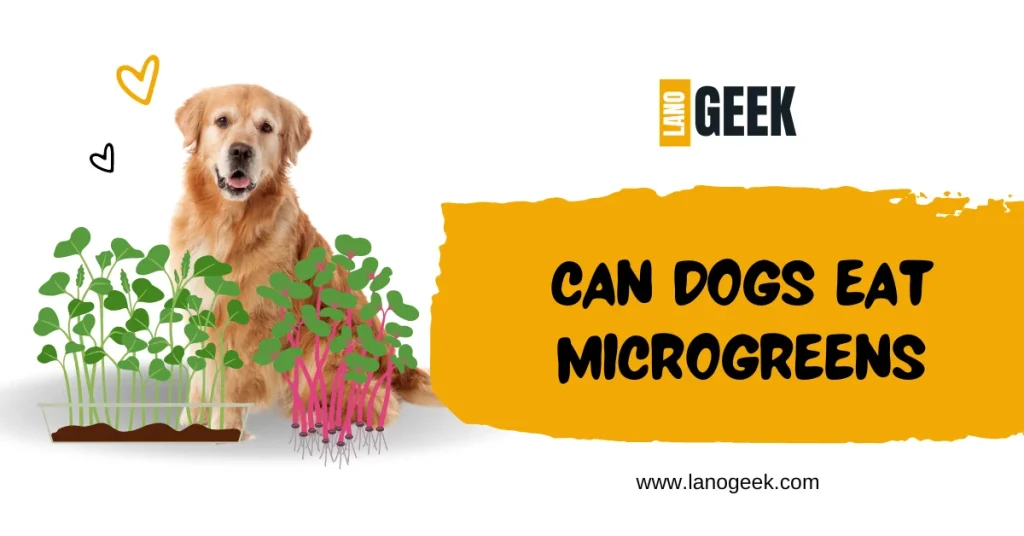Lets delve into the wonders of microgreens for dogs, starting with understanding what exactly these tiny greens are all about. Microgreens, harvested at the tender age of 2-3 inches, are the unsung heroes of the plant world, offering a concentrated burst of nutrients that surpass their fully grown counterparts. These nutrient-dense greens hold the promise of bolstering your dog’s health in ways you might not have imagined. Lets talk about the safety of microgreens for dogs, ensuring that your pet’s well-being remains the top priority. From debunking myths to highlighting potential risks, we’ll navigate through the maze of information to provide you with clear, evidence-based insights. So, sit back, relax, and let’s embark on this enlightening journey into the world of microgreens – your dog’s new best friend in nutrition.
Recent Read: Are-raw-chicken-feet-good-for-dogs
Health Benefits
Microgreens aren’t just tiny in size; they pack a powerful punch of nutrition that can benefit your dog’s health in numerous ways.
- Heart Health: Loaded with antioxidants, microgreens can help lower the risk of cardiovascular disease in dogs by combating harmful free radicals and reducing triglyceride levels.
- Cancer Prevention: Certain microgreens, such as broccoli, contain compounds like sulforaphane, known for their cancer-fighting properties. By incorporating these greens into your dog’s diet, you can potentially reduce the risk of certain types of cancer.
- Diabetes Management: Antioxidants found in microgreens can improve insulin sensitivity, facilitating better sugar uptake into cells. This can be particularly beneficial for dogs with diabetes or those at risk of developing the condition.
- Anti-Aging Properties: The vitamins and antioxidants abundant in microgreens help protect your dog’s cells from oxidative damage, thus slowing down the aging process and promoting overall longevity
Specific Microgreens
When it comes to selecting microgreens for your furry friend, it’s essential to choose varieties that offer the most nutritional value and are safe for canine consumption.
- Broccoli: Rich in fiber, calcium, and vitamin K, broccoli microgreens also contain sulforaphane, a potent compound with cancer-fighting properties.
- Kale: Loaded with antioxidants and essential vitamins and minerals, kale microgreens are excellent for supporting your dog’s overall health.
- Red Cabbage: Packed with vitamins A, B, C, and K, as well as antioxidants, red cabbage microgreens help reduce inflammation and promote immune health.
- Wheatgrass: A source of chlorophyll and amino acids, wheatgrass microgreens are safe for dogs in moderate amounts and offer various health benefits.
- Lettuce: Varieties like romaine, butterhead, and baby leaf lettuce are safe and nutritious options for dogs, offering a range of vitamins and minerals.
Process To Grow
Growing microgreens at home is a simple and rewarding process.
- Choose Seeds: Select high-quality seeds from reputable sources, ensuring they are safe for consumption by dogs.
- Prepare Containers: Use shallow trays or containers with drainage holes to plant the seeds
- Plant Seeds: Scatter the seeds evenly over moistened soil and cover them lightly with a thin layer of soil.
- Provide Adequate Light: Place the containers in a sunny location or under grow lights to promote healthy growth.
- Water Regularly: Keep the soil consistently moist but not waterlogged by watering gently as needed.
- Harvest: Once the microgreens reach a height of 2-3 inches and develop their first set of true leaves, they are ready to be harvested.
Feeding
Introducing microgreens into your dog’s diet is easy and can be done in various ways:
- Mix with Meals: Chop or blend microgreens and mix them into your dog’s regular meals or homemade dog food.
- Offer as Treats: Alternatively, you can offer microgreens as treats for your dog to enjoy between meals.
- Limit Quantity: Remember to limit the quantity of microgreens to ensure they do not exceed 10% of your dog’s daily diet.
Fermented
Fermenting microgreens can enhance their nutritional value and make them more digestible for dogs. Simply include microgreens in your fermentation process along with other vegetables to create a probiotic-rich treat for your furry friend.
Conclusion
Incorporating microgreens into your dog’s diet can provide a plethora of health benefits, from supporting heart health and cancer prevention to aiding in diabetes management and promoting anti-aging properties. By selecting specific microgreens that are safe and nutritious for dogs, learning how to grow them at home, and incorporating them into your dog’s meals, you can ensure that your canine companion enjoys a balanced and nutritious diet that enhances their overall well-being.






